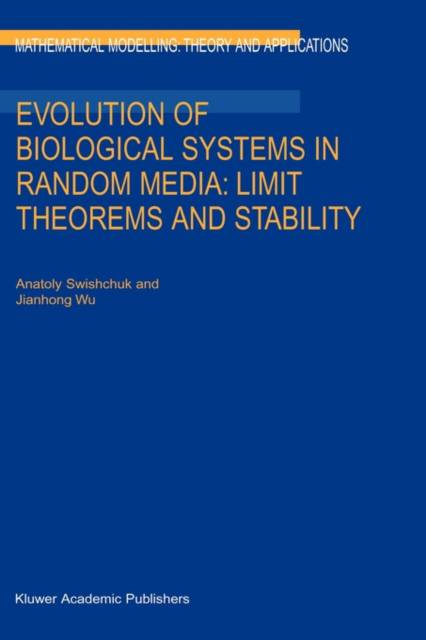
- Retrait gratuit dans votre magasin Club
- 7.000.000 titres dans notre catalogue
- Payer en toute sécurité
- Toujours un magasin près de chez vous
- Retrait gratuit dans votre magasin Club
- 7.000.0000 titres dans notre catalogue
- Payer en toute sécurité
- Toujours un magasin près de chez vous
Evolution of Biological Systems in Random Media: Limit Theorems and Stability
Anatoly Swishchuk, Jianhong Wu
125,95 €
+ 251 points
Description
The book is devoted to the study of limit theorems and stability of evolving biologieal systems of "particles" in random environment. Here the term "particle" is used broadly to include moleculas in the infected individuals considered in epidemie models, species in logistie growth models, age classes of population in demographics models, to name a few. The evolution of these biological systems is usually described by difference or differential equations in a given space X of the following type and dxt/dt = g(Xt, y), here, the vector x describes the state of the considered system, 9 specifies how the system's states are evolved in time (discrete or continuous), and the parameter y describes the change ofthe environment. For example, in the discrete-time logistic growth model or the continuous-time logistic growth model dNt/dt = r(y)Nt(l-Nt/K(y)), N or Nt is the population of the species at time n or t, r(y) is the per capita n birth rate, and K(y) is the carrying capacity of the environment, we naturally have X = R, X == Nn(X == Nt), g(x, y) = r(y)x(l-xl K(y)), xE X. Note that n t for a predator-prey model and for some epidemie models, we will have that X = 2 3 R and X = R, respectively. In th case of logistic growth models, parameters r(y) and K(y) normaIly depend on some random variable y.
Spécifications
Parties prenantes
- Auteur(s) :
- Editeur:
Contenu
- Nombre de pages :
- 218
- Langue:
- Anglais
- Collection :
- Tome:
- n° 18
Caractéristiques
- EAN:
- 9781402015540
- Date de parution :
- 31-10-03
- Format:
- Livre relié
- Format numérique:
- Genaaid
- Dimensions :
- 165 mm x 248 mm
- Poids :
- 503 g

Les avis
Nous publions uniquement les avis qui respectent les conditions requises. Consultez nos conditions pour les avis.






